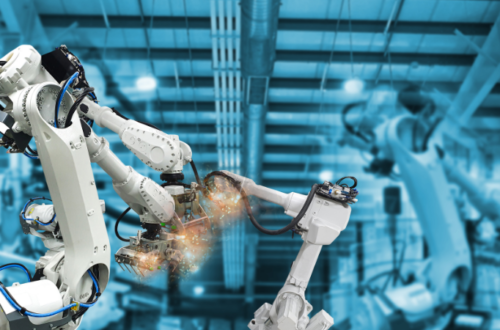In today’s fast-paced world, crisis management has become an essential component for organizations, governments, and industries to prepare for, respond to, and mitigate potential risks. From natural disasters to cyberattacks, organizations face a wide array of crises that require detailed planning and execution. Traditionally, crisis management relied on live training sessions, tabletop exercises, or scenario-based discussions. However, with the advent of technology, 3D animation has emerged as a powerful tool to enhance these simulations.
In this blog, we’ll explore how 3D animation supports crisis management simulations, enhancing preparedness and decision-making. We’ll also discuss the broader applications of 3D animation services.
The Need for Crisis Management Simulations
Crisis management simulations aim to replicate emergency situations, allowing organizations to test their response protocols, train personnel, and assess vulnerabilities. The stakes are high in a real-life crisis, so the accuracy and realism of these simulations are critical. A well-executed crisis management simulation can:
- Improve decision-making skills
- Identify weaknesses in protocols or technology
- Enhance coordination between different departments
- Help stakeholders practice communication strategies
- Ensure compliance with safety and regulatory standards
However, traditional methods like paper-based drills and verbal exercises can often fall short of providing a fully immersive and comprehensive experience. This is where 3D animation services can transform how crisis simulations are carried out.
The Role of 3D Animation in Crisis Management Simulations
- Immersive Realism
One of the key advantages of using 3D animation in crisis management simulations is the ability to create realistic, immersive environments. Unlike traditional methods, 3D animation can model real-world scenarios down to the smallest details. Whether it’s simulating a fire in an industrial plant, a chemical spill, or a natural disaster like a flood or earthquake, 3D animation can replicate real-life elements such as weather conditions, building layouts, and geographical features.
The immersive nature of 3D animation allows participants to experience these situations in a visually compelling way, making the simulation more engaging and realistic. This heightened sense of realism is crucial for preparing responders for the sensory and emotional impact of real-life crises.
- Customizable Scenarios
3D animation services provide a level of flexibility that is difficult to achieve through traditional training methods. With 3D animation, simulations can be easily customized to fit specific crisis scenarios and organizational needs. Different crisis events, such as terrorist attacks, cyber breaches, or public health emergencies, can be modeled and adjusted depending on the complexity or severity of the situation.
For instance, a company may want to simulate a cyberattack that affects its data centers. A 3D simulation can model the impact of the breach, the response of the IT department, and the consequences for business operations. Similarly, a hospital may simulate a pandemic outbreak using 3D animation to show the spread of a virus in a controlled setting.
By using 3D animation services, crisis management teams can run multiple scenarios with varying outcomes, allowing them to test different strategies and identify the most effective response.
- Enhanced Decision-Making
Crisis management requires quick thinking and effective decision-making. In a high-pressure situation, individuals and teams must make decisions based on limited information and constantly evolving circumstances. 3D animation can enhance decision-making processes by providing real-time feedback during simulations.
Participants can view animated representations of their decisions and actions. For example, in an evacuation scenario, the choices of emergency responders, such as the route they take or the order in which they evacuate individuals, can be visualized and analyzed for effectiveness. This real-time feedback allows participants to see the consequences of their actions and make adjustments as needed.
Moreover, 3D animation simulations can incorporate data from previous crises, historical patterns, or current environmental conditions to create predictive models. By visualizing how a crisis could unfold, decision-makers can gain deeper insights into potential outcomes and plan more effectively.
- Training and Skill Development
For many organizations, especially those in high-risk sectors such as oil and gas, aviation, or healthcare, crisis management training is a continuous process. Personnel must be trained not only on crisis protocols but also on technical skills and soft skills such as communication and teamwork.
3D animation provides an interactive platform where personnel can engage in hands-on learning. For example, aviation safety teams can use 3D animations to simulate aircraft emergencies, allowing pilots and crew members to practice evacuation protocols. In the oil and gas industry, personnel can simulate offshore drilling accidents to improve their ability to manage hazardous situations.
Additionally, 3D animations can model complex systems or processes that are difficult to replicate in real life. Trainees can interact with animated representations of machinery, fire suppression systems, or medical equipment, giving them a better understanding of how to operate these systems in an emergency.
- Communication and Coordination
Crisis management involves multiple stakeholders, from emergency responders to government agencies, media, and the public. Coordinating efforts and maintaining clear communication during a crisis is essential. 3D animations can help visualize the roles and responsibilities of each stakeholder, providing a clear understanding of how different teams should work together.
For example, in a large-scale natural disaster simulation, 3D animation can illustrate the flow of information between emergency responders, government officials, and public health agencies. It can also simulate how media outlets report on the crisis and how the public responds. By visualizing these interactions, organizations can better understand the importance of communication during a crisis and improve coordination across different entities.
The Use of 3D Animated Logos in Crisis Communication
Effective communication is key during a crisis, and branding plays a significant role in maintaining public trust. A 3D animated logo can be a powerful tool for organizations during a crisis, especially when communicating with stakeholders, clients, or the public.
Here’s how a 3D animated logo can enhance crisis communication:
- Visual Appeal and Engagement
In the age of digital communication, visual content is more engaging than text-based messages. A 3D animated logo can capture attention and communicate a message quickly and effectively. During a crisis, organizations often need to release updates or public statements across various platforms, from social media to television. A dynamic 3D animated logo can make these messages more visually appealing and memorable.
- Consistency in Branding
During a crisis, it is important for organizations to maintain consistency in their messaging and branding. A well-designed 3D animated logo can reinforce brand identity, even during uncertain times. It conveys professionalism and stability, reassuring stakeholders that the organization is in control of the situation.
- Interactive Features
Some 3D animated logos incorporate interactive elements, allowing viewers to click on the logo for more information. This can be particularly useful in a crisis situation where organizations need to direct people to resources, contact details, or live updates. By integrating interactive features into a 3D animated logo, organizations can enhance user engagement and provide quick access to essential information.
- Emotion and Storytelling
A 3D animated logo can also serve as a storytelling tool. For example, an organization responding to a natural disaster may animate its logo to reflect resilience and recovery, incorporating elements that evoke empathy and hope. Storytelling through animation helps build emotional connections with the audience, which can be important for crisis management, especially when dealing with sensitive issues.
Benefits of 3D Animation Services in Crisis Management
The use of 3D animation services in crisis management offers several advantages, including:
- Cost-Effectiveness: Compared to live training exercises or real-world drills, 3D animation simulations are more cost-effective. Organizations can run multiple scenarios without the need for physical space, props, or personnel.
- Repetition and Practice: 3D animation allows for repeated practice of crisis scenarios. Personnel can participate in the same simulation multiple times, honing their skills and improving response times.
- Data Integration: 3D simulations can integrate data from sensors, monitoring systems, and historical records, providing a more accurate representation of potential crises.
- Global Collaboration: In today’s interconnected world, crises often require coordination between multiple organizations and countries. 3D animations can facilitate global collaboration by providing a common platform for crisis management training and simulations.
Conclusion
As the world becomes more complex and crises become more frequent and varied, the need for effective crisis management has never been greater. 3D animation services provide an innovative and immersive solution to enhance crisis management simulations. From creating realistic environments and customizing scenarios to improving decision-making and training personnel, 3D animation is transforming how organizations prepare for crises.
Moreover, the role of 3D animated logos in crisis communication should not be overlooked. These logos serve as a visual representation of an organization’s identity and can play a key role in maintaining public trust during difficult times.
Incorporating 3D animation into crisis management and communication strategies not only improves preparedness but also ensures that organizations are equipped to respond effectively when disaster strikes. Whether for training, coordination, or communication, 3D animation is proving to be an invaluable tool in the modern world of crisis management.





